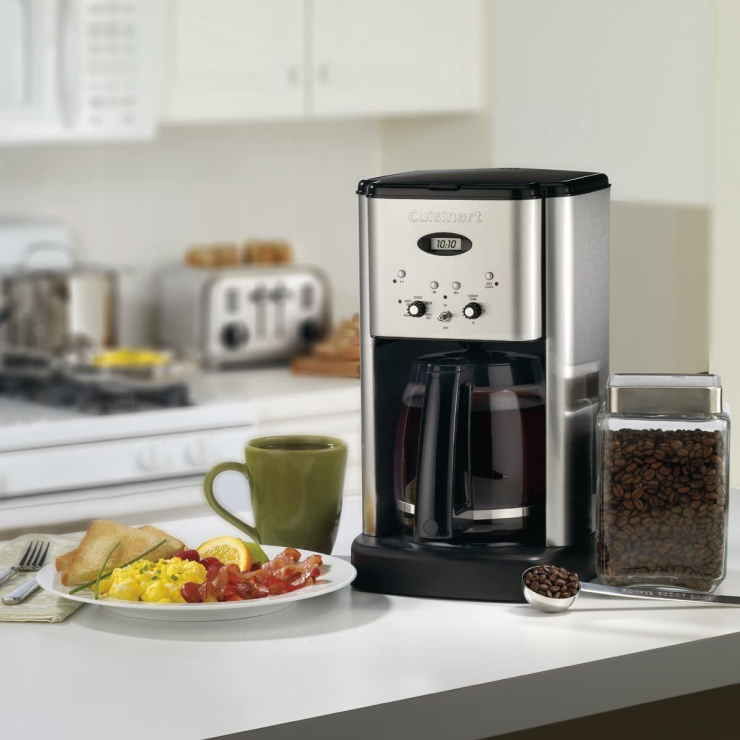How Long Do Coffee Makers Last?
If you’re a coffee enthusiast like me, you can’t imagine starting your morning without a superb cup of coffee. However, a coffee maker’s lifespan can vary significantly. The average lifespan of a high-quality coffee maker is five years. However, high-quality machines can last for more than ten years when properly maintained.
Although a good coffee maker typically lasts for a long time, several variables can affect this. How frequently you use a coffee maker, the quality of its construction, and regular maintenance are a few of the many elements that can impact how long you can use your dependable machine before replacing it. Continue reading to find out more about how long do coffee makers last.
How Long Are the Coffee Makers Expected to Last?
How frequently you use an automatic coffee maker will determine how long it will last. Even though most coffee makers have a one-year warranty, their typical lifespan is between three and five years. The more frequently you use your machines to brew coffee and other beverages, the quicker their parts deteriorate.
The longevity of your device will also depend on how you maintain it. If you value your coffee, you should plan to spend money on a high-quality appliance that can withstand daily coffee brewing demands and last a long time.
When learning about how long do coffee makers last, knowing that a manual coffee maker can last a lifetime as opposed to an automatic one is helpful when discussing how they differ from one another. In addition, there are no consumable parts that degrade during use.
French presses, percolators, and pour-over coffee makers are among the manual coffee makers most commonly made of glass, ceramic, metal, or plastic. They are, therefore, everlasting. The filter is the only thing that needs to be changed. The metal mesh filter at the plunger’s end of a French press needs to be replaced after about six months of daily use.
Unlike manual coffee makers, automatic coffee makers like drip or single-serve coffee makers can last for five to ten years. The machine’s ability to survive this long results from a routine cleaning schedule that involves descaling and cleaning. It depends on the types, brands, maintenance, and use volume. Regular maintenance on the equipment can also help the coffee makers last longer.
Tips for Increasing the Life of Your Coffee Maker
- Periodically clean it
You should concentrate on cleaning the drip tray, steam wand, and group head every time you use your machine. The drip tray of your device will fill up with coffee grounds and water each time you use it, creating the ideal conditions for mold to grow. So empty it and wash it every time with hot water, don’t let it fester. To ensure you adhere to the manufacturer’s instructions for your machine, read the instruction manual.
- Descale your coffee maker
Mineral buildup accumulates on the internals and boilers of your machine over time. Your area’s water hardness will determine how frequently you need to descale. The device may clog and stop functioning if you don’t routinely descale it.
- Avoid using hard water
If you use hard water, your coffee maker will accumulate buildup, and the tubes will clop up more quickly. In addition, you’ll find that you have to replace the water filter more often if you live in a region with hard water.

When Is It Time to Replace Your Coffee Maker?
- Your coffee preferences have changed
Aside from a coffee machine physically breaking and requiring repair, one of the more obvious reasons you may want to upgrade your coffee maker is based on your personal preferences. It is common for our tastes to change throughout our lives. Our taste also evolves. Although you may have enjoyed drip coffee in the past, you may now have a strong preference for espresso. Or maybe a French press would suit your needs better.
- The water is not heated sufficiently
When your coffee maker can no longer heat water sufficiently, it’s time to replace it. Unfortunately, if the coffee the machine is producing is no longer hot, there may be a problem with the mechanics that will not be easy or quick to fix.
Even though you might be able to upgrade to a newer coffee maker from an older one by replacing the heating element, now is probably a great time to do so. Unfortunately, the heating element is also impacted by aging and wear. As a result, the machine might produce weak, cold coffee much colder than the recommended 195-205 F temperature range.
- When the coffee maker is not working
It may seem obvious, but it’s probably best to completely replace a coffee maker when it stops functioning. Unless there are flaws in the design or defects, the coffee maker shouldn’t break easily. However, it is advised to contact the manufacturer to have your coffee maker replaced if that occurs.
Numerous things could go wrong, including the pump failing and the machine suddenly starting to leak from the cracked bottom of the tank. These are all solid grounds for replacing the coffee maker. However, in most cases, it is preferable to replace the entire brewer rather than attempting to identify and fix the machine unless it is still covered by warranty.
Conclusion
Great appliances like coffee makers make it simpler for us to prepare our preferred hot drinks. Even though they typically only last for about five years, they could last as long as ten years with proper care. Keep in mind that the price doesn’t always determine quality.
The features, components, models, types, and brands of a coffee maker should be considered when estimating its lifespan. In the end, if you want your coffee maker to last, you must take good care of it. That’s all there is to it! I hope that by now, you ought to have a general knowledge of how long do coffee makers last.

